2026-01-10 00:00:00
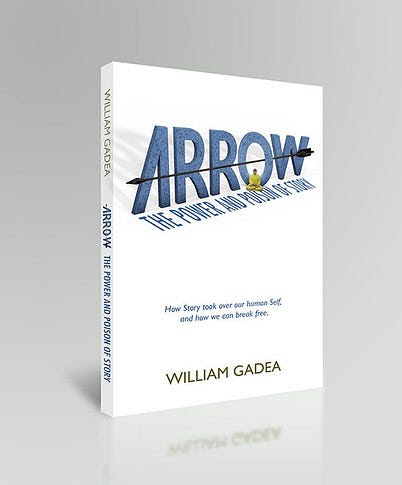
Drawing from neuroscience, evolutionary biology, and Buddhist philosophy, Arrow explores how storytelling became humanity’s defining superpower, and reveals how the stories we tell ourselves about ourselves can either liberate or imprison us.
Different cognitive faculties — consciousness, emotion, episodic memory, mental simulation, language, and theory of mind — converged in human evolution to create a new ability: storytelling. This capacity became a tool for communication, a mechanism for self-regulation, and a means of social connection that shaped who we are.
What we call our “self” is not an objective reality but a story we continuously tell ourselves. Our identity comprises interconnected narratives: our origin story, our present identity, and our anticipated future. As Gadea writes, “Story is a tool that became its inventor. What we call our Self is a Story.”
The book’s title references a Buddhist parable about a monk struck by a poisoned arrow. Like that arrow, our storytelling ability is dual-natured — it enables powerful human connection and meaning-making, but it can also foster discontent, self-deception, and suffering when we forget our stories are just stories.
Rather than abandoning stories entirely, Gadea suggests developing a different relationship with them — constantly remembering that they are constructions rather than fixed truths. This awareness opens a pathway to being steadier, stronger, more connected, and more content.
“The stories we don’t pay enough attention to are the stories we tell ourselves about ourselves. My practice isn’t about losing those stories — it’s about constantly remembering that they are just stories.”
2026-01-09 00:00:00
I’ll spare you all the “best travel destinations of the year” and “where to go in 2026” slop that you’ve probably seen all over. Here’s a listicle based on real data: the busiest air routes of the past year. One glance at this list will make it obvious that the supposedly busy flight paths in North America have nothing on Asia. New York to London barely cracked the top 10 and that route had 3.97 million seats sold compared to 6.83 million for #1 Hong Kong to Taipei. Seoul had 2 of the top 5 (to Tokyo and Osaka) and there were 5.57 million seats sold for the short hop from Kualu Lumpur to Singapore. I’m guessing that Allah is responsible for the #2 route in the world: Cairo to Jeddah.
It’s hard for any normal person to judge “the best” over-ear headphones since few of us ever have the chance to compare a bunch of them side by side with the same music. Wired magazine did that though, with real audiophiles, and compared their blind test answers. Third place went to the most expensive (Apple Airpods Max) and second to the Nothing Headphones, but the one that came out on top had the lowest price of the six. That would be the Soundcore Space One Pro, currently going for just $149 on Amazon.
If you know a lot of people who book through Airbnb, you have likely heard at least a few horror stories about late cancellations by hosts, bad communication, or misrepresentations of listings. It might be worth taking a new look at Vrbo because they recently revamped their policies to become much more renter-friendly. Changes include active help when a hosts cancels (90 days out even) and stricter “Premier Host” qualifications to highlight rentals without complaints. See the full story here.
Don’t want to make a trip to the airport to get approved for TSA Pre-check? Well it turns out you can do it while shopping for Sharpies and ink cartridges: Staples has an arrangement with the government to approve you for the expedited TSA security lines in the USA. You might want to check with your credit card if reimbursement for this is one of its perks (and it’s included in Global Entry), but see the details here.
A weekly newsletter with four quick bites, edited by Tim Leffel, author of A Better Life for Half the Price and The World’s Cheapest Destinations. See past editions here, where your like-minded friends can subscribe and join you.
2026-01-08 00:00:00
A construction professional based in Sweden, currently working with residential projects. Interested in flow, systems thinking, and practical ways to manage complexity at work and in life. Uses simple tools to stay focused, learn continuously, and protect long-term capacity. — Magnus Ojala
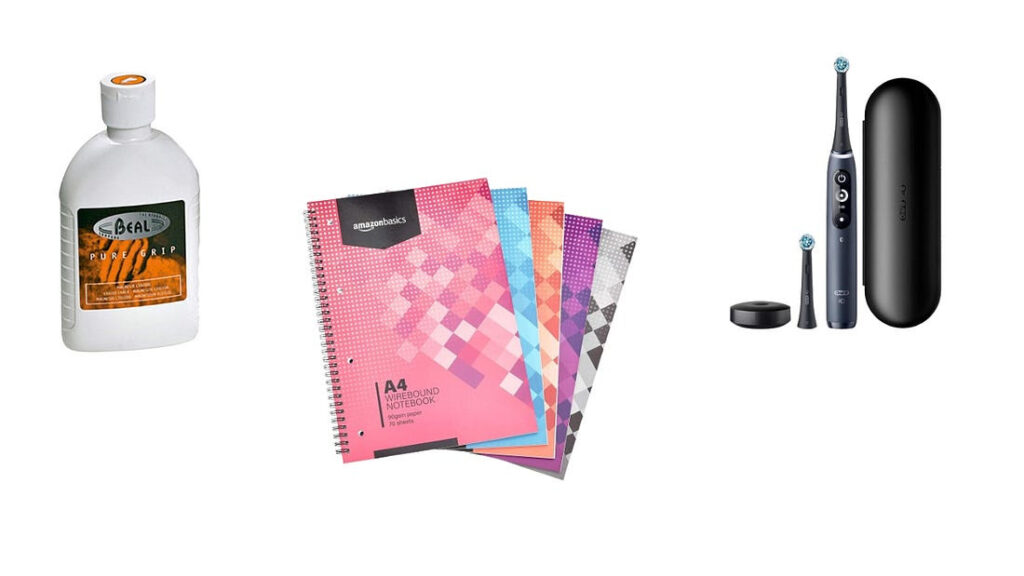
Herbie, the bottleneck
From The Goal by Eliyahu Goldratt. In the story of Herbie, the slowest boy in a hiking group determines the pace of the entire line. Even if everyone else walks faster, overall throughput cannot exceed the speed of the bottleneck.
The insight is simple: system performance is governed by its constraints, not by the individual speed of its fastest parts.
2026-01-07 00:00:00
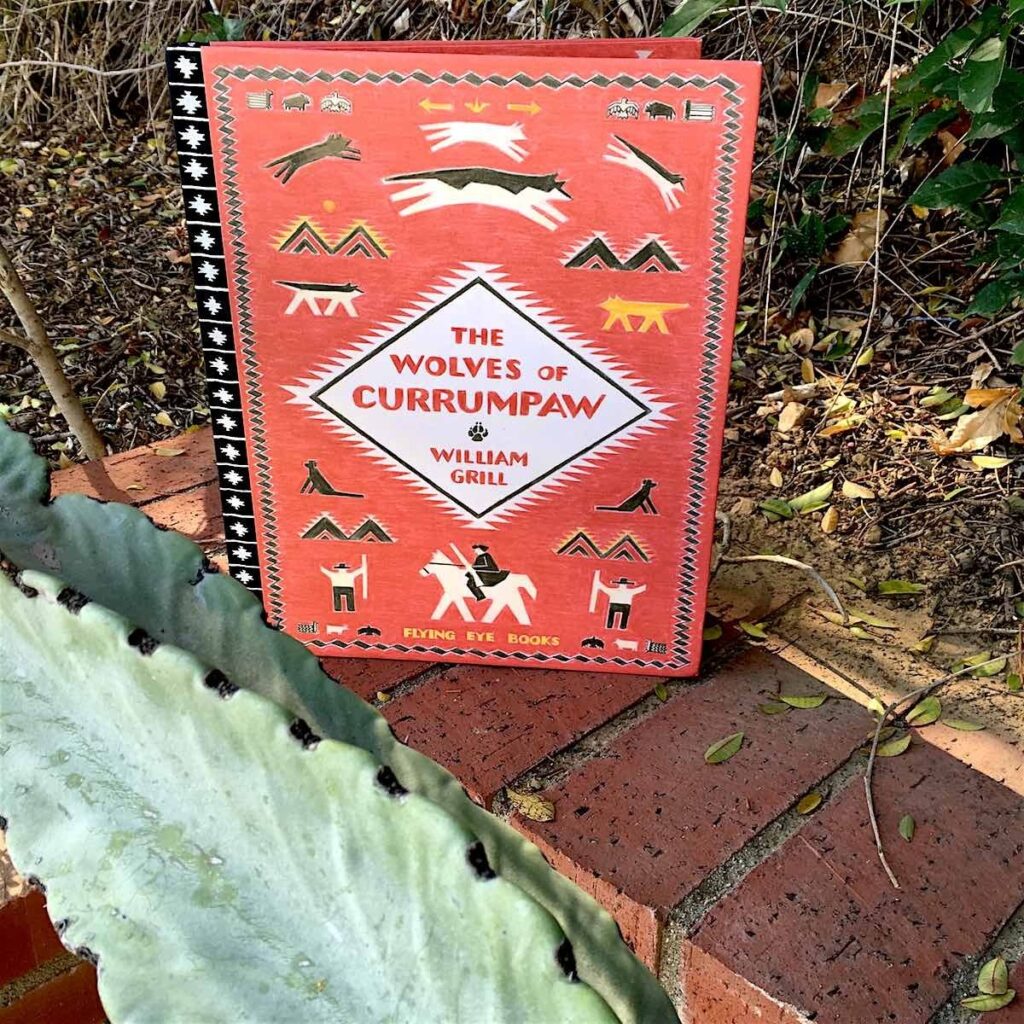
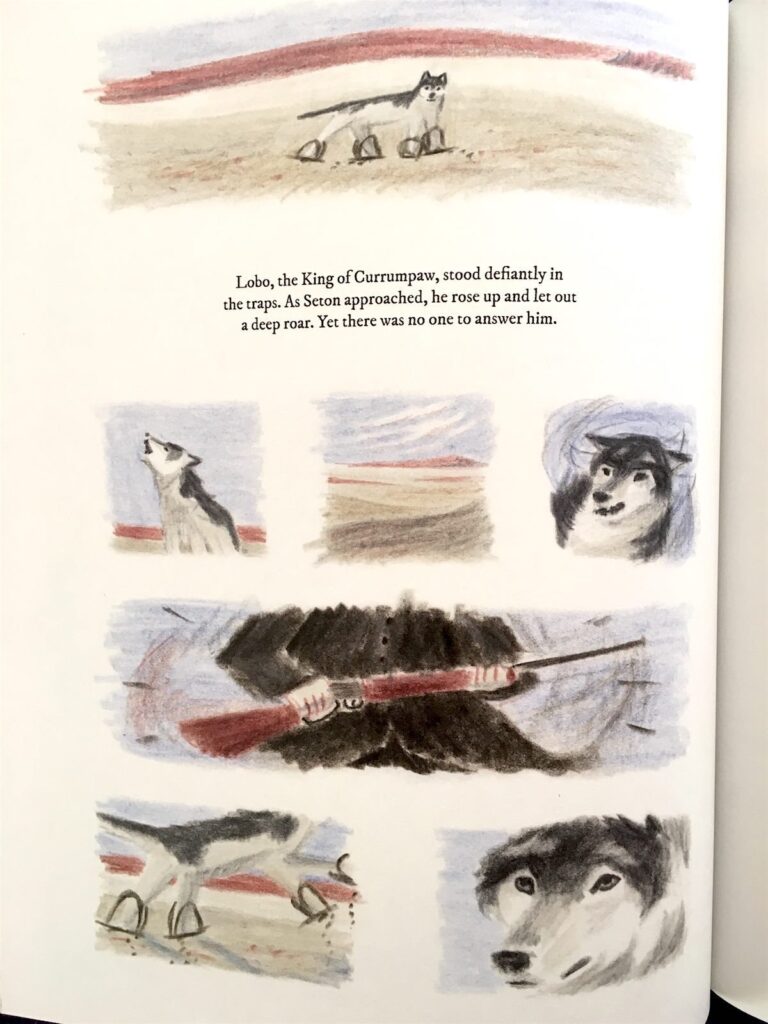
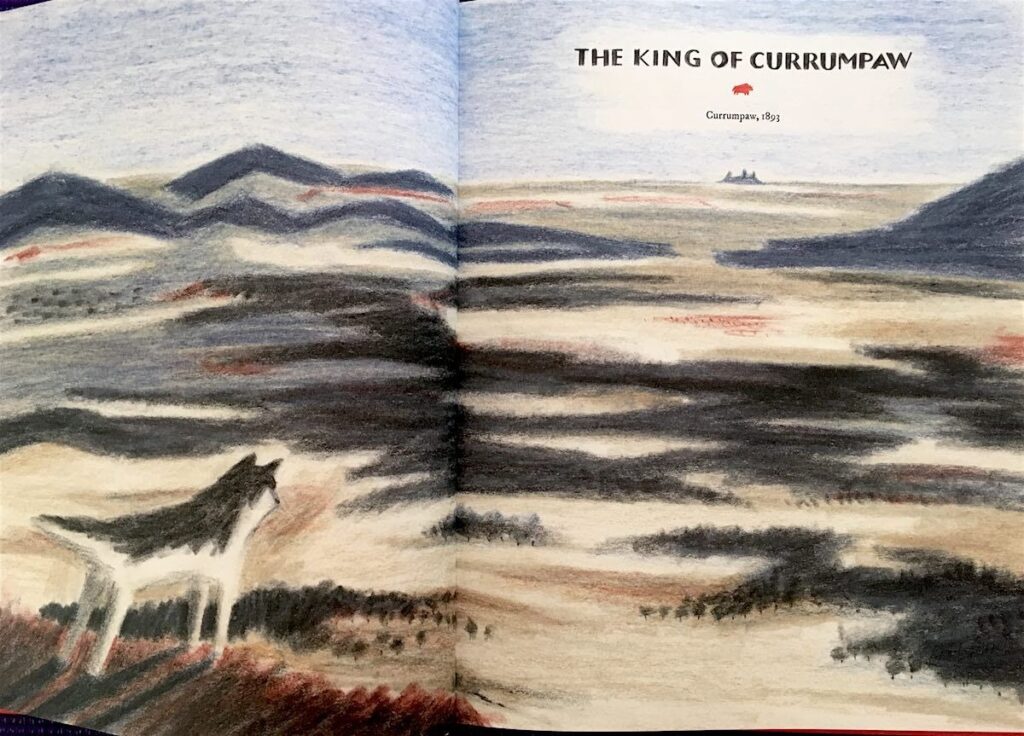
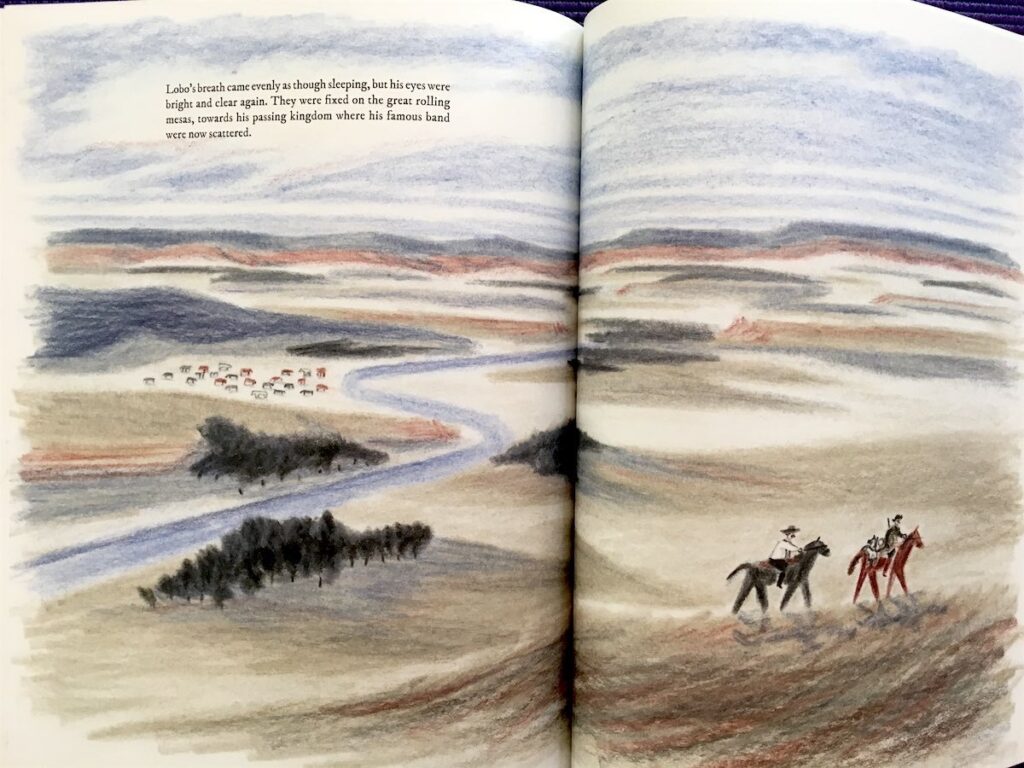
The Wolves of Currumpaw
by William Grill
Flying Eye Books
2016, 80 pages, 9.7 x 12.1 x 0.6 inches
In the early 1800s, half a million wolves roamed North America, but by 1862 settlers began pouring in from Europe and the landscape started to change. “These were the dying days of the Old West and the fate of wolves was sealed in it,“ begins The Wolves of Currumpaw.
The Wolves of Currumpaw, released today, is a true story about a wolf named Old Lobo, and a skilled hunter, Ernest Thompson Seton. Lobo was part of notorious pack of wolves in 1893 who, for five years, raided the ranches and farms of the Currumpaw Valley in New Mexico. Nobody was able to catch the stealthy wolf, and the locals began to think Old Lobo, or the King as they called him at the time, possessed supernatural charms. The locals finally offered $1000 to anyone who could catch him. Expert hunters set out to track him and hunt him down, but like the Terminator, Lobo couldn’t be killed – until Canadian-raised Seton came into town.
SPOILER paragraph: The story ends tragically, and might not be appropriate for more sensitive children. Seton does succeed in taking Lobo down, a section of the book that was hard for me to read. But then Seton has deep regrets and becomes a changed man. As a writer and sudden activist, Seton devoted the rest of his life to raising awareness about wolves. He was also one of the founders of the Boy Scouts of America.
Like William Grill’s other picture book, Shackleton’s Journey, Wolves is beautifully illustrated on thick textured paper with colored pencils. Wolves, which is based on Seton’s short story, Wild Animals I Have Never Known, is powerful, told as much by Grill’s narrative as it is by his illustrations. Grill has chosen two interesting, not commonly taught histories as the subjects of his first two books, and I look forward to seeing what he brings us next. – Carla Sinclair
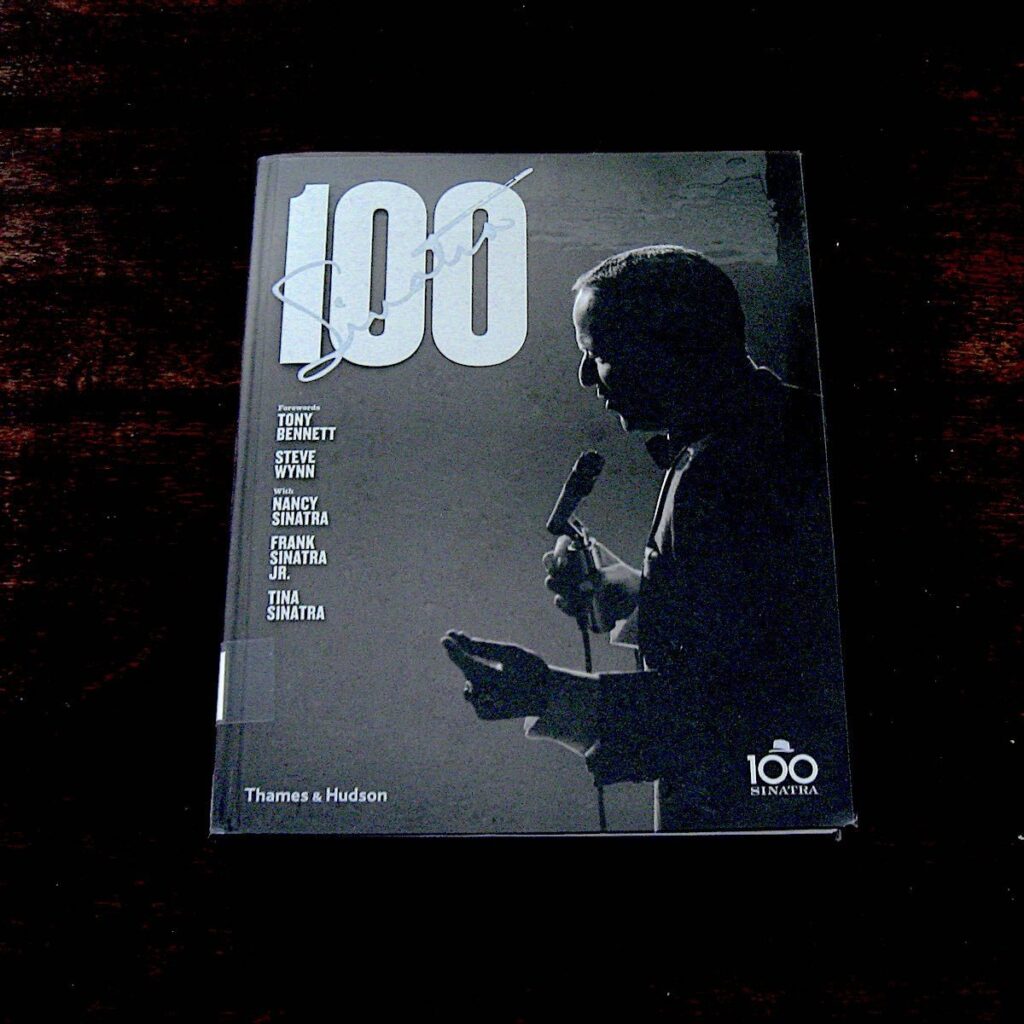

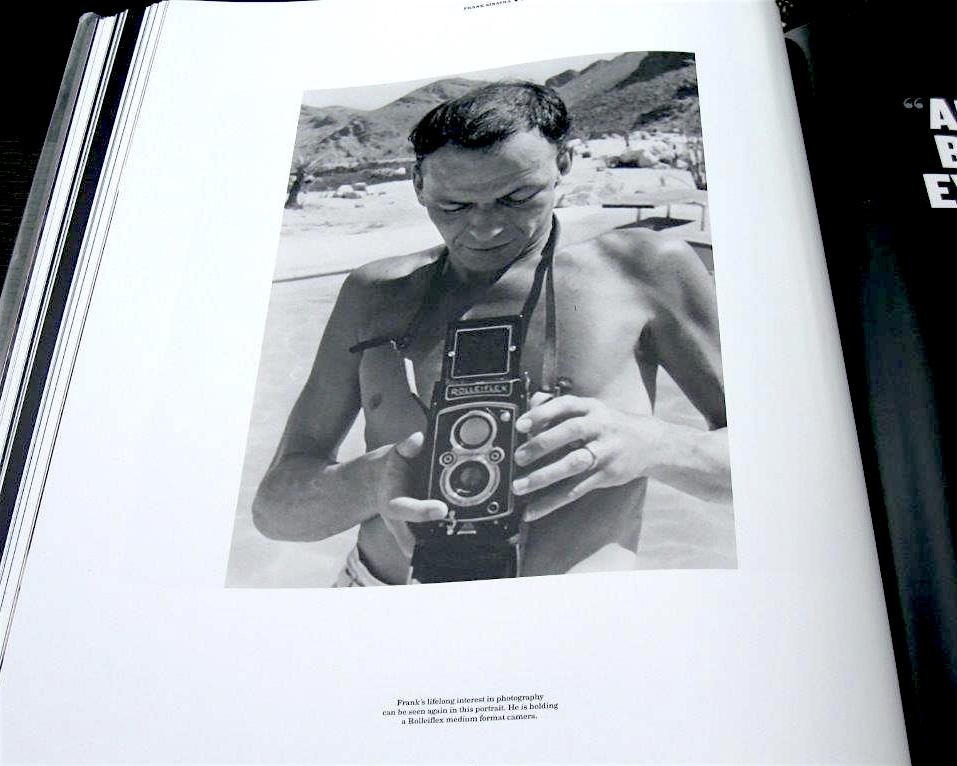


Sinatra 100
by Charles Pignone
Thames & Hudson
2015, 288 pages, 11.2 x 13.9 x 1.3 inches
Sinatra 100 encapsulates the legendary performer’s life through text and previously unseen photographs from the family archives as well as classic images from various photo shoots. After forewords by two friends who knew him best, Tony Bennet and Steve Wyn, as well as an introduction by book author Charles Pignone, the book is broken into three long sections: The Voice 1915-1952, Chairman Of The Board 1953-1972, and Ol’ Blue Eyes 1973-1998. That leads readers into afterward sections by various family members and other items of interest.
Frank Sinatra, the man who would be known as “The Voice,” was born in Hoboken, New Jersey on December 12, 1915. Singing in his Dad’s bar led to a lifetime in music. The pages of that first section detail in photographs and text how difficult his early career was as well as his personal circumstances. After having some very early success, by the early 1950s Sinatra could have easily been relegated to a brief footnote in history. It was those early days that taught him what loyalty meant to both himself and others.
While the early fifties were ugly, things changed fairly rapidly. Winning the Oscar on March 25, 1954 was a pivotal point in that turnaround and a small taste of what was to come. In Chairman Of The Board 1953-1972, that turnaround is thoroughly detailed. Sinatra quickly became a box office superstar while his deal with Capital Records made him a major business success. His personal life was another matter as marriages came and went. All of this is detailed in both text and pictures though it is the pictures that really tell Sinatra’s story by way of Hollywood movie sets, recording studios, award events, and more.
The final section, Ol Blue Eyes 1973-1998, covers the later years of Frank Sinatra’s incredible life. He had found peace and had gradually returned to singing by way of touring. Along the way the awards and accolades came to him from a worldwide audience as he continued to entertain people everywhere. While the text is important, the pictures truly tell the tale and are the real story of the book. Often the photographs capture other well-known figures such as Orson Wells, Bing Crosby, Clark Gable, etc. As such the photographs not only give readers a glimpse back in time of Sinatra, they also serve to showcase other legendary talents and others who just happened to be in the right place at the right time to be immortalized. They serve as a window into history, not only of Frank Sinatra, but of our history and culture over decades of American life.
It is worth noting that the coffee table-sized book is very heavy. Beyond the sheer weight of approximately six pounds is the fact that the text in captions and elsewhere in the book is very small. The caption text is even smaller than the main text with the result being a very well done book that could be difficult to read for those who have eyesight issues. Published by Thomas and Hudson this tome is meant as an all-encompassing historical visual record to commemorate the singer’s 100th birthday. – Kevin Tipple
Books That Belong On Paper first appeared on the web as Wink Books and was edited by Carla Sinclair. Sign up here to get the issues a week early in your inbox.
2026-01-06 00:00:00
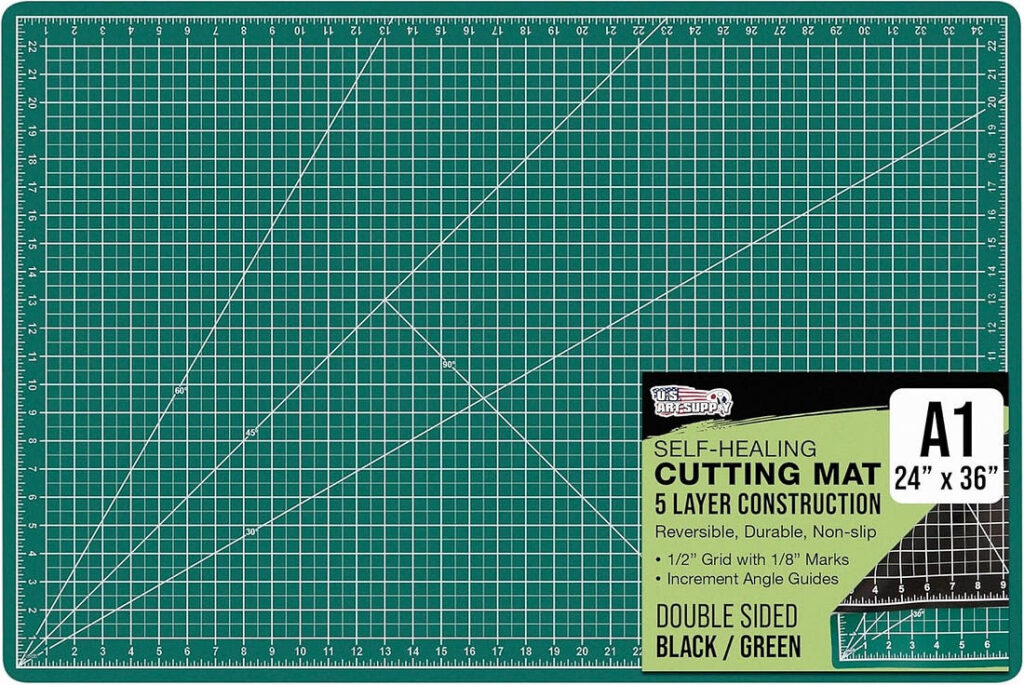
You razor-cut things on this mat, and unlike other materials it won’t accumulate a field of cut marks to misguide your blade. The self-healing rubber keeps the surface uniformly smooth, clean, and firm. And protects your table. Get the largest one you have room for and can afford. A large mat also says: don’t pile stuff here. — KK
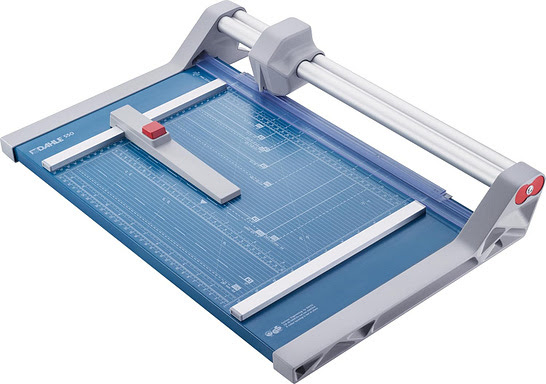
Until a couple of years ago I had struggled with different inexpensive paper cutters, but I kept finding myself going to Kinko’s and using the cutters there. Then I got smart and jotted down the brand name, Dahle 550 Rolling Trimmer Paper Cutter, and bought one online.
What I appreciate most about this cutter is that I never have to change blades, or deal with dull blades, because it’s self-sharpening. The steel rotary blade contained within the plastic safety housing moves across a stationary blade that extends the length of the cutting platform. This action hones the rotary blade, which remains constantly sharp. It’s also set up for wall mounting, which is ideal in my home office layout.
One of the Dahle’s downsides is that the plastic plate that holds the paper down got dinged up — keep away from kids — causing the blade to run off the track if I’m not careful. Also, the next one I buy will be a larger model: The 550 is meant to cut up to 14 1/8-inch paper, but it’s awkward cutting anything over 8×10. — Andrew Heidrich
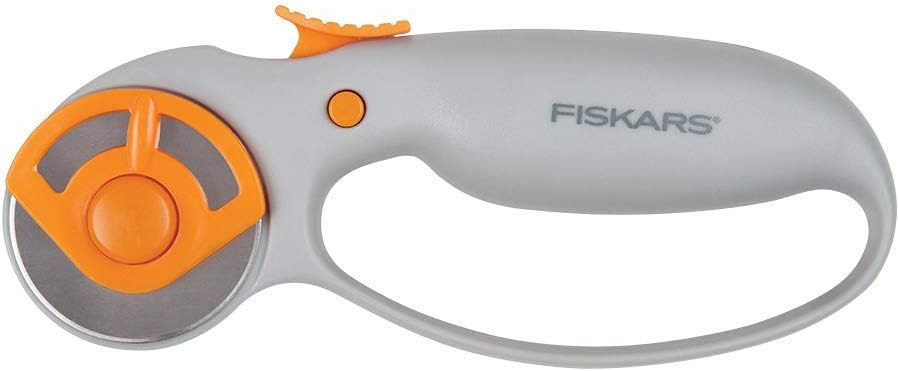
Rotary cutters aren’t new tools. It’s just taken me awhile to appreciate how great they are. The Fiskars Rotary Cutter replaces exactos for most heavy-duty cutting jobs in our household. It’s faster, surer, easier and therefore safer to use than razor blades. It will slice through paper, vinyl, cardboard, fabric, and foam board with ease and accuracy. I can only manage perfectly straight long cuts with a rotary cutter and straight edge. Cutting curves is buttery. Seamstresses can add pinking blades. The replaceable blade retracts when not in use; it can be side-switched for left-handers. When I think “cut” I reach for this tool. — KK
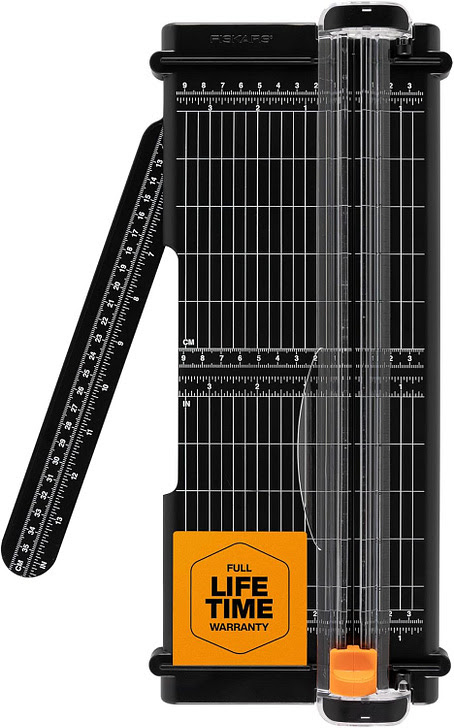
It is simply impossible to make a genuine straight, right-angle cut on paper using scissors, or even a razor blade and straight edge. The old guillotine paper cutter could deliver a clean cut, but at the risk of taking your fingers away. Fiskars, the scissors makers, invented a cutter with a tiny blade mounted on a hinged holder that zips through paper without any possible harm, even to the youngest children. It’s fast, accurate, and crisp. — KK
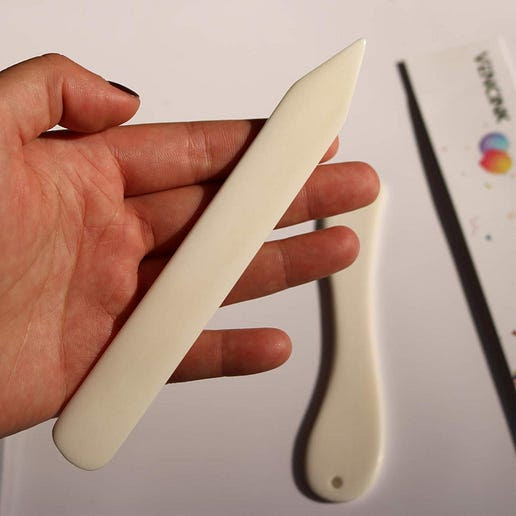
A classic bone folder is made of real bone, not plastic or Teflon, and resembles a fat, blunt-edged tongue depressor, rounded at one end and pointed at the other. With it, I can turn a digital print, piece of cardstock or watercolor paper into a professional-looking note or greeting card.
Pulling the pointed end alongside a straight edge and across the paper produces a subtle score that facilitates a perfect fold. Next, I fold the card very gently by hand along the score, and then stroke one of the short, straight sides of the bone folder along the score to flatten the rounded fold to a sharp crease.
When sending a letter that I want to look good, I make two quick strokes of the folder along preliminary hand folds to create folded edges that are sharp and square. Bone folders also can be used to burnish paper as it is glued to cardstock, album or scrapbook pages. They produce accurate and sharp folds and creases on origami papers as well as facilitate sculpting, architectural modeling or bookbinding with paper.
I recommend rubbing your bone folder with olive oil from time to time to avoid flaking or brittleness. Folders made of real bone are best, unless you wish to use a Teflon folder to avoid the slight luster sometimes created by the friction of a real bone folder. — Clifford Peterson
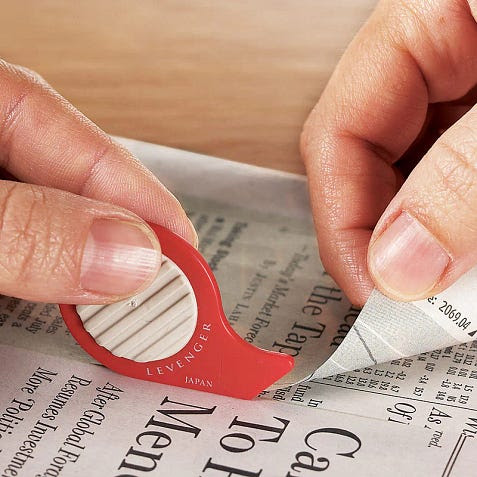
I like to clip items from the newspaper or magazines that are relevant to my clients and prospects. This tool makes that task simple — just grip between thumb and forefinger and trace the outline of the article you want to clip — you even leave the underlying pages intact! — Bruce Bradford
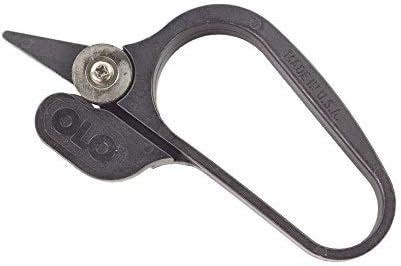
Two rotating wheels slice paper the way an open scissors does occasionally. Absolutely marvelous for cutting wrapping paper or making lots of long cuts. Also great for kids who don’t quite have the coordination to use scissors well. We keep ours in the gift wrap box. — KK
Once a week we’ll send out a page from Cool Tools: A Catalog of Possibilities. The tools might be outdated or obsolete, and the links to them may or may not work. We present these vintage recommendations as is because the possibilities they inspire are new. Sign up here to get Tools for Possibilities a week early in your inbox.
2026-01-05 00:00:00
I, too, now have a Substack newsletter where I post a short essay once a week. It’s my “works in progress” on technology, culture, travel, art, and even spiritual stuff. Some of my essays are brand new, and some are older pieces cross-posted from my Technium blog. Instead of having to visit the blog, I send it to you in an email (that is Substack). My pieces are low-stakes, cold takes – I am not in a hurry. I aim to pay attention to long-term trends. Comments are active and I try to respond to sincere comments. Sign up at KK on Substack. It’s free (although I have some paid subscribers, thank you!). — KK
My wife replaced her PopSocket phone grip to the new Snap Grip 5 ($40). It’s just 3mm thick, with a profile that prevents it snagging on pockets like bulkier grips. It has a powerful magnet that snaps to MagSafe phones. You can use it as a one or two-finger grip, flip it into a sturdy kickstand, or stick your phone to any metal surface (fridge, gym equipment, car door). Works with iPhones and includes an adapter for Android phones. — MF
My mother is a seeker, so I grew up baptized multiple times and in and out of various churches. As an adult, I’ve had to rebuild my relationship with both spirituality and community, and I tend to assume every organized group with a shared mission is a cult until proven otherwise. That’s why I really appreciate this carefully constructed “Is It a Cult?” tool by ClearerThinking. The assessment looks at things like unusualness, conformity, isolation, control of information, ethics, and sacrifice, reflecting the nuanced criteria behind their Cult Assessment tool. ClearerThinking’s programs and assessments are grounded in empirical data and are balanced in perspective, and this particular questionnaire understands that being a cult is not binary—it’s a set of traits, each of which lies on a continuum. — CD
I was skeptical about air fryers until I tried the Ninja Crispi. It comes with three glass containers so you can see your food cooking, and they’re non-toxic (no Teflon coatings). I’ve made sweet potatoes that came out caramelized on the outside and soft inside. It’s perfect for crisping frozen samosas and pupusas in minutes. My mother baked a whole chicken in it beautifully. The containers go from freezer to cooking to table to dishwasher. — MF
This piece argues that most nine-to-five workers underuse their after-work hours because we stay in our “inner CEO” identity, which hijacks free time with urgency traps like emails, Slack pings, and low-value work that keeps laptops open all night. The advice is to acknowledge and give time to our other inner characters—like the Lover, Artist, Friend, and Athlete—and create a simple cast schedule for weeknights. For example, on Mondays the Athlete moves your body, on Tuesday the Friend schedules a conversation or hangout, and so on. The real key is honoring the end-of-work transition with a shutdown ritual: create a two-do list for the next day, close unnecessary tabs, say out loud “Workday closed, artist open,” and then do something sensory (shower, stretch, short walk, or after-work-only music) to let the next character take the spotlight. — CD
My favorite advice guru is Dan Pink. He is very wise, but also very concise. He can convey a book’s worth of advice in a few minutes – and his advice is good and practical. He is a master of dispensing his wisdom in very short videos. His latest class is a 4-minute lesson on How to Fix Your Attention Span. Might as well stay for his other lessons as well. — KK
Sign up here to get Recomendo a week early in your inbox.